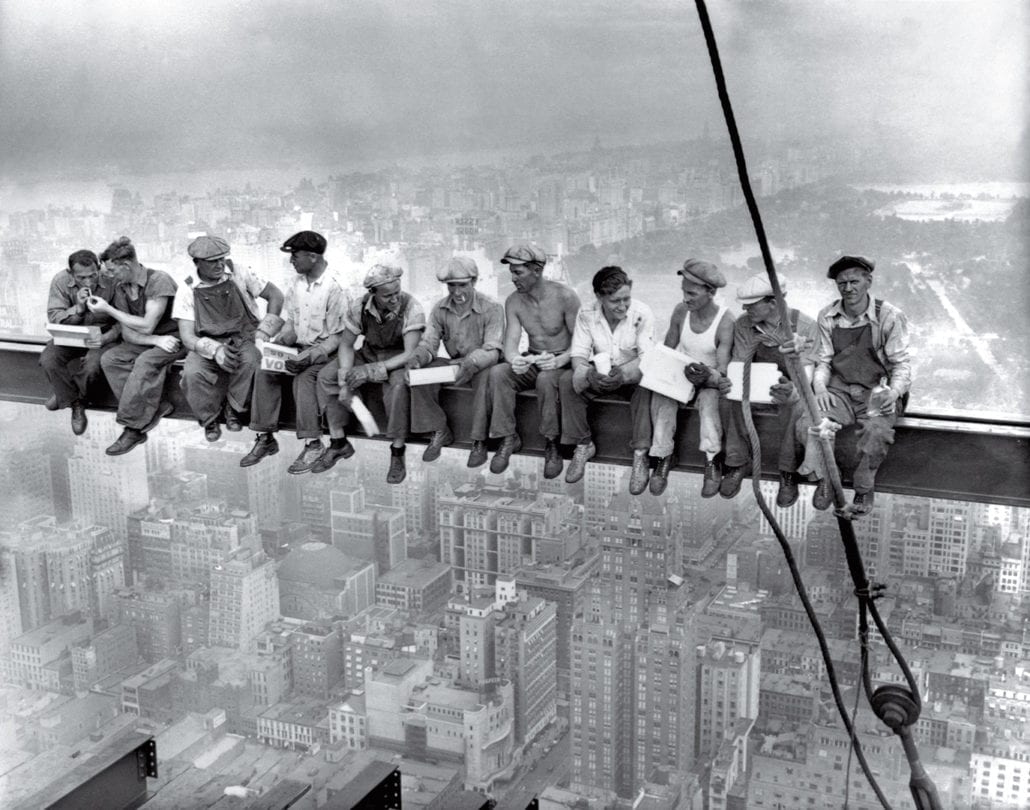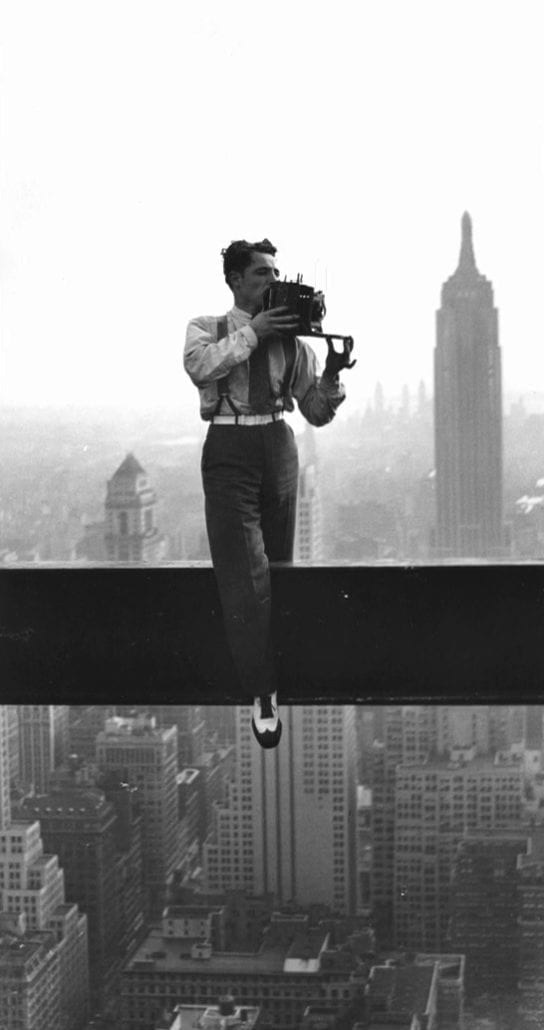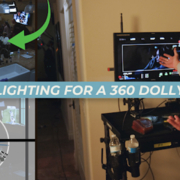The American Dream of Movie-Making
Movie-making – an American Dream
“It ain’t about how hard you can hit, it’s about how hard you can get hit and keep moving forwards.” – Rocky Balboa
When I think about movies, about why I wanted to be involved in making movies, I have a real sense of pride that America has always and will always be the standard bearer for this industry. Think about it. To name but a few; Charlie Chaplin came here as a vaudeville circus performer from England with the sole purpose of making movies that would make people laugh, Marilyn Monroe, Rita Hayworth, and Sofia Loren blew us all away with their beauty on screen whilst Bruce Willis, Arnold Schwarzenegger and Sylvester Stallone blew away the bad guys and the box office records with the action movies of the late 80s and early 90s.
That’s just those in front of the camera (and behind in Chaplin and Stallone’s cases). There’s a huge raft of talent on set every single day that often go unnoticed yet they shape the movies that transport us into other worlds, other situations, make us feel emotions that we never experienced before, and create colors that make us gasp in awe…
 Chaplin was a different type of boxer to Rocky
Chaplin was a different type of boxer to Rocky
Marilyn Monroe… beautiful and incredibly talented!
Arnold there telling us his secret to success… I could have used other quotes from Pumping Iron, but Arnold’s take on getting “the pump” isn’t really too relevant – if you know, you know!
That’s why the immortal mantra of Rocky Balboa is the basis for this story – a story about the American Dream, which is very pertinent for this 4th of July celebration, and for that reason I’m focusing on four companies created by people who embodied The American Dream and without whom the movie industry would be nowhere near what it is today.
“There’s talent on the streets, kids with ideas who have stories to tell and never get a chance.” – Jim Jannard
Jim Jannard is a leviathan of our industry. There is no other way to say it. A man who was born and raised in Alhambra, California and attended the USC School of Pharmacy. However, the key moment when Jim became integral to this story is when he dropped out of college (as many great entrepreneurs have done – not advocating that though, stay in school, kids!*) to travel across the U.S. on a motorcycle.
*or better still, sign up to Hurlbut Academy (imagine me winking and pointing at you like Uncle Sam right now – or look below).
Let’s be honest, in 1975, you could just take off on a motorcycle – it was the 70s, gas prices were cheap and everyone loved the movie Easy Rider – who didn’t want the Dennis Hopper handlebar mustache? Have you seen my pictures from that era – they should be accompanied by a Ron Jeremy soundtrack!
Dustin Hoffman in Easy Rider with the natural precursor to my next pic
That’s exactly what Jim did – started a one-man business selling motorcycle custom handlebar grips at motocross events. Then when that became hugely profitable, he was riding along one day and realized his Carrera sunglasses didn’t cover his eyes from the sun enough so invested in motorcycle and ski goggles and sunglasses. Here’s the kicker, here’s where I tell you the brand name you all know… He named his company after his dog, Oakley. And having started the company with $300, he sold Oakley in November 2007 for $2.1 billion. The American Dream, right?

“But Shane, what has this got to do with the movie industry?” I hear you scream at your computers and tablets. Be patient young Padawans, here’s where Jim Jannard became a personal hero. The guy was a film fanatic and when he could see that the key players in the industry – Sony, Arri, and Panavision – were attempting to persuade the film industry that 1080P was going to be the digital replacement for film. He threw out a huge “f— that!” As a film fanatic, he knew that digital would replace film, but he wanted that replacement to be respectful to film – 1080P or 2K was not respectful.
So, Jim’s idea was to make a 4K digital camera, to create a film alternative that actually was equal to or better than film in every aspect.
“I wanted to send film to the retirement home proud of what we had done.” – Jim Jannard
Replacing film is not easy and, more importantly, it’s not cheap! Think about resolution, dynamic range, color, ease of use, the cost to shoot, and post options… (this list goes on and on and on and sadly I’m no Eminem so I can’t make lists sound exciting).
Jim’s RED ONE (above) symbolized exactly what I’m talking about – a 4K camera for under $20K. “What Shane? You gotta be kidding me!” you shout at the screen like I’m on one of those TV Shopping Channels. No, it’s true and it blew everyone away when it was announced too and the next year, there it was; Red One with Mysterium sensor, 4K for $17,500. Sony’s digital cinema cameras were over $200k. This guy had come out with a camera that was a tenth of the price!
Now for the next TV Shopping channel catchphrase, “But wait, there’s more!”
Jim went on to announce “Obsolescence Obsolete” – sounds like a new Ridley Scott movie, right? Well, how about this for the American dream – Jim and RED saved the consumer from having to buy a new camera every time there was a new technological advancement by having upgrades for the camera you bought. Think of that! Every time color science improved, Red upgraded the firmware for free! On top of that, when the Mysterium-X came out, Jim and the team offered this sensor as an upgrade. You didn’t have to buy a new camera, just send your camera in and pay for the upgrade. I don’t need to sell my house, a lung, turn to my male stripping like Magic Mike and spend the next year eating noodles in a plastic cup to keep my camera relevant!

“Ché”, “Knowing”, “The Social Network”, “The Girl with the Dragon Tattoo”, “The Informant”, “The Amazing Spiderman”, “The Hobbit”, “Prometheus”, “The Great Gatsby” – all shot on Jim’s RED cameras. These are heavyweight prize-fighter movies! The company is only just a decade old. That’s nothing short of incredible.
All of the doubters to Jim and RED after he delivered on everything he said he was going to
Now, having stepped away from the public spotlight, Jim still works on new Red Cameras with the Epic, Monstro, Helium, Dragon, and my favorite, the Gemini all cornering the market and pioneering new ventures in our industry. Jim Jannard embodies the American Dream and for that reason, had to be part of this story.

“Some people are born great and some have greatness thrust upon them.”
For many, the American Dream is not always the thing that you set out to do but is born out of opportunity or even necessity. The passion that all of the companies that I am focusing on today have for movies is immense, but they may have started from humble beginnings and stumbled into their position as a brand leader in the industry. Tiffen is a key example of this.
Imagine late-1930s New York; the hustle and bustle of Times Square, a huge Skyscraper is going up with 11 men enjoying lunch together sitting on a beam of 65th floor overlooking Manhattan – pretty gnarly huh?

Lunch atop a skyscraper – People always say it’s daring and adventurous. Have you seen the guy taking the photo? Take a look…
Well, that era is when Sol Tiffen and his family’s metal machining company were producing components for fitting lenses for the photographic market. Sol’s brother Nat had a passion for photography and as the business got bigger and bigger they saw that they needed a good set of quality filters to go with the products that they were producing – and like that, Tiffen filters was born. (this would sound so much more epic with a cool soundtrack. Let’s try that again – click play below and imagine the Tiffen story in yellow writing moving upwards and into the distance on a black, starry background).
Sol turned out to be a Jedi destined to spend his life avenging those that had created substandard filters before him.*
*That’s a lie, but it goes well with the music.
“It’s our job to create filters that give the control that allows the cinematographer to tell the story in the best way possible. Everything should be about the story.”
What’s so cool about Tiffen is, like Coca-Cola and KFC, they have a secret process of producing their filters and they use this to consistently replicate colors (including Red 25 and Sky 1A) as well as replicating Kodak’s CC [color correction] filters. I know exactly what I’m going to get and let’s be honest, as we move from 4K to now 8K (AY KARAMBA!) then filters and their role is going to be even more key. Here’s Steven Tiffen to say exactly what I just said, but in a much nicer way – also it’s nice to hear from someone different once in a while, don’t want you getting bored of me!
“Sensors are getting higher resolution and lenses are getting sharper. This is an opportunity to give cinematographers back control as they are shooting.”
Well said, Steven.
Now, imagine the 70s; I’m talking flares, bell bottoms, garish colors, free love, Woodstock, Jimi Hendrix shredding Voodoo Chile on vinyl, peace and love necklaces – pretty much if you weren’t around back then, imagine Austin Powers 2, Mork and Mindy, I think I had a look of Sam Malone in Cheers. Let’s throw on some mood music…
Way back in 1968 Roy Isaia was moonlighting by sewing scrims and flags in his mother’s garage to earn some extra cash. Now, understand, that this was all happening during a time when the Studios were going from building and constructing their own equipment to outsourcing that works to vendors. That was creating and opening up a whole new market for innovative pioneers, which is what this beautiful city of LA and our incredible film industry were built on. People are willing to risk everything for their dreams. The story of Matthews truly encapsulates the American dream – a real rags to riches story about working hard and starting from nothing to build a business that goes global.
Okay, you’re in the zone. Well, in 1971 Ed Phillips joined Roy on this adventure and that’s when things really changed. The two of them started building their own stands to fit their textiles. It was Ed who worked with the Society of Motion Pictures to standardize male and female mounts that are now almost interchangeable. Male mounts are on the left because females are always right. (Eye roll)
Roy and his wife had a son, named him Matthew, and had one heck of an idea! That idea resulted in naming the company Matthews Studio Equipment, and now and forever we will be using his name whether we are shaping light or rigging cameras. Matthew, like Jim Jannard’s dog Oakley, is now ingrained in our hearts and minds forever. Maybe part of the American Dream also involves naming your successful business after a pet or loved one – just in case I’ll buy the rights to Rover Film equipment, Fido Filters, and Lassie Lenses.
There’s a TON of ‘firsts’ for Matthews as a company. You can thank them for folding c-stands, spring-loaded c-stands, the doorway dolly, the Hi roller stand, and the standard way pretty much every stand has adopted today. That’s A LOT of innovation!

Now, we’ve been relying on Matthew’s for grip and electric equipment for years, and it’s been exciting to see the company evolve into what it is today! Some of our other articles that have featured some of Matthews’ unique qualities and equipment are C-Stand Basics and something that really resonates with me is how Matthews will apply technical changes and even create new equipment based on ideas of industry professionals. What’s really great about that is it means Matthews is constantly trying to redefine the industry and make it even better. Below are a few examples of that.
THE DUTTI DOLLY
 The Dutti Dolly was the conception of industry veteran James Saldutti, something he imagined, and took it to Matthews. Now, it’s one of the most sought-after dollies in the industry. At two inches off the ground, it glides with smooth precision. It’s a 20×24 inch aluminum plate and has eight skate wheels that allegedly can handle up to 800 pounds, now I haven’t been able to fit that much weight on it yet so I haven’t tested that fact but I can tell you – I haven’t broken it yet!! It’s the most stable slider I’ve used too. In tight spaces, I used to turn to the Dana Dolly but this Dutti dolly is way more stable and durable.
The Dutti Dolly was the conception of industry veteran James Saldutti, something he imagined, and took it to Matthews. Now, it’s one of the most sought-after dollies in the industry. At two inches off the ground, it glides with smooth precision. It’s a 20×24 inch aluminum plate and has eight skate wheels that allegedly can handle up to 800 pounds, now I haven’t been able to fit that much weight on it yet so I haven’t tested that fact but I can tell you – I haven’t broken it yet!! It’s the most stable slider I’ve used too. In tight spaces, I used to turn to the Dana Dolly but this Dutti dolly is way more stable and durable.
So, now you know the Dutti dolly is named for James SalDUTTI. Let this be an inspiration to always push for something better and always be innovating. You want to have that mindset that’s always thinking, ‘How can I do this better?’ The industry is always evolving. When I’m on set, I’m constantly checking how can I make this or that better. It’s no secret, I’ve always been a DIY guy because I don’t mind getting my hands dirty. If I need something to work a certain way, or need to make a modification, I bust out the power tools! The “Hurlbut Hi Roller” has a nice ring to it, doesn’t it?
But that’s just it, Matthews is integrated within the industry. Rather than someone like me relying on DIY endeavors, they’re helping to develop ideas and push them throughout the industry. It’s that personal support they offer and their ability to produce, and do it all right here in LA that’s truly inspiring.
MINI MAX MENACE ARM
Another of Matthews industry-born ideas, and one of my personal favorites that I use all the time, is the Mini Max Menace Arm. Hollywood Key Grip Richard Mall drew up the idea for the original Max Menace arm and this pared-down version is the go-anywhere hang anything replacement for rigging on small sets. Need to get a light up and over your talent? Don’t even think about extending that C-Stand arm – break this baby out. This thing actually won for Technical Achievement Award at the Motion Picture Academy of Arts and Sciences. That’s how smart this thing is.
THE KERRIKART
When the Kerrikart was revealed at NAB 2015, it redefined what a cart could be for me. This unique cart has the strength of a magliner but the weight is more in line with something from Innovativ. The Kerrikart was the brainchild of Montreal-based Director of Photography Bill Kerrigan.
The Kerrikart is simple and it requires less gear because you should always KISS – Keep It Simple Stupid. It’s tough and durable but still lightweight. You can build and break this sucker down in less than five minutes. It’s also a cakewalk in rough terrain because of its pneumatic tires. Now they just need to add a motor to the thing so it can push itself!
Robert Kulesh, Vice President of Sales and Marketing for Matthews Studio Equipment says it plain and clear in an interview with The Guild of Television Cameramen, “When Bill brought us his cart design, we were excited to become involved with the new product.” See – Matthews is there listening and innovating, pushing the movie industry forward.
Now this may seem like a love letter to Matthews, and to be fair, they’re not perfect and they’ve got some things they still need to iron out – like their butterfly frame kits, but all in all, I’ve been impressed as hell by this company and in a time when everybody seems to be going overseas for cheap labor these guys keep it close to home. You have gotta respect that!
It’s really been amazing watching Matthews grow over the years. As the company continues to develop it will be interesting to see how Matthew’s elevates the ideas of the industry as it takes on newer ideas and works them into this ever-thriving community of artists, gearheads, and visionaries.
This is America, ladies, and gentlemen. Our constitution openly tells us that the Pursuit of Happiness is one of the ideals that we hold. That “pursuit of happiness” is the reason we can chase that American Dream, it’s what defines us. We have to give everything of ourselves, to “hit and get hit and keep moving forwards” to build something incredible and leave our mark on the world. The movie industry exists because of this great nation, it’s our gift to the world – make your mark, build your dream and leave a legacy that you can be proud of. These people did once.


























Trackbacks & Pingbacks
[…] doing so changed filmmakers’ worlds for the better. If you didn’t see it, it’s right here. This first post of 2019 begins with the same theme – dreams; the dreams we have here at HV […]
Comments are closed.